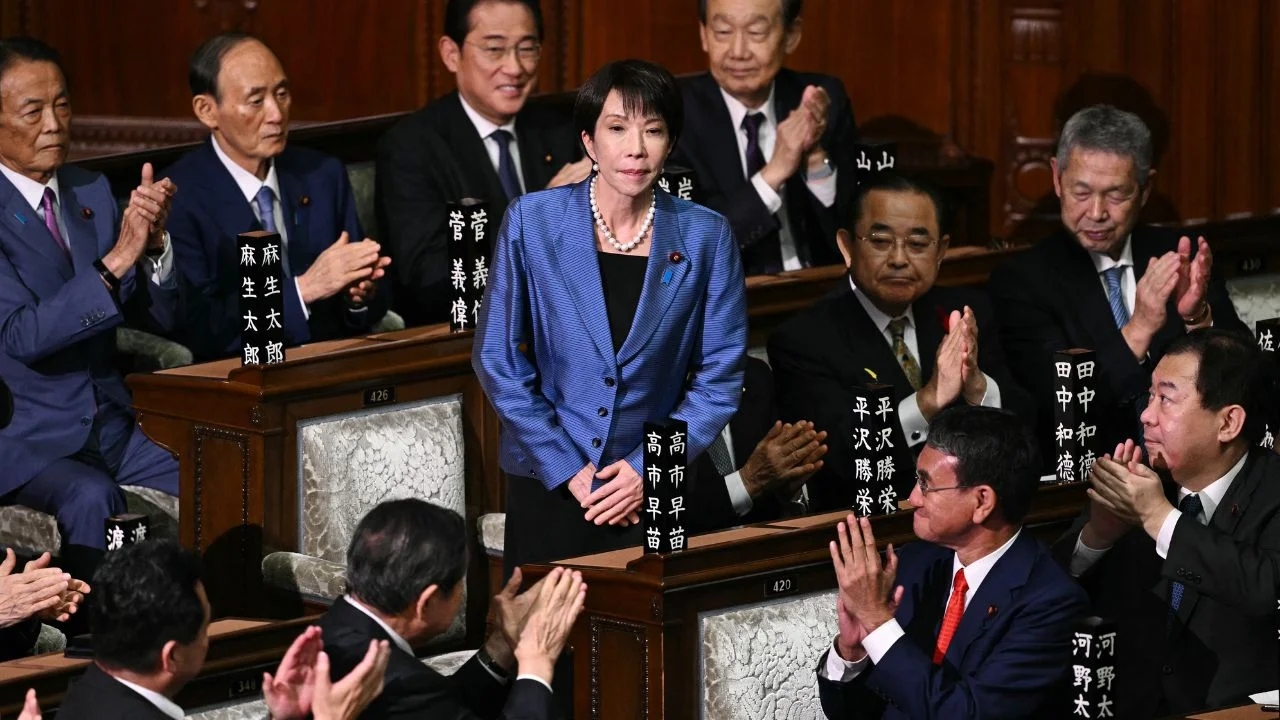Takaichi embodies unbroken power in Japan


Sanae Takaichi made history by becoming the first woman to govern Japan . A conservative, nationalist, and political heir to Shinzo Abe , her rise symbolizes an unparalleled milestone in Japanese politics , but also a paradox: a woman breaking the glass ceiling to reinforce the structures that sustain it .
At 64, Takaichi leads the Liberal Democratic Party (LDP), the party that has governed Japan almost uninterruptedly since the postwar period. After defeating four men in the party primaries, she was appointed prime minister by Parliament after forging a last-minute coalition with the even more conservative Japan Innovation Party.
In a country where women hold only 15% of parliamentary seats and Japan ranks 118 out of 148 in the 2025 Global Gender Gap Index, her victory seems like a breakthrough. However, the composition of her cabinet—only two women ministers among 19 members—reveals that the change is more symbolic than structural.
Japan elected its first female Prime Minister Sanae Takaichi, 64, heavy metal drummer who defeated 4 men to make history Shinzo Abe protégé wears blue suits honoring Margaret Thatcher, plays drums to Iron Maiden
First woman to lead Japan. The political 🅱️attle begins now. pic.twitter.com/nG6Xt305HW
In her youth, Takaichi dreamed of independence and power. “I dreamed of having my own castle,” she wrote in her 1992 memoirs. But her career didn't follow the path of a revolutionary. A heavy metal fanatic and admirer of Margaret Thatcher, she was raised in the heart of traditional Japanese politics.
His career was marked by his closeness to Abe, with whom he shared a nationalist vision : increased military spending, patriotic education, and constitutional reform to strengthen the Japanese military.
His discourse has been consistent with this ideology. He opposes equal marriage, rejects the right of couples to retain different surnames, and defends exclusively male succession in the imperial family . He has minimized 20th-century war crimes and promotes a revisionist view of the past.
🇯🇵Sanae Takaichi's gateway to heavy metal came at age 10 when her piano teacher, a music college student working part-time at a record company, gave her unwanted sample records. Among them was Black Sabbath.
By middle school she was obsessed with Deep Purple, particularly their… pic.twitter.com/MiTggUCavV
— Kumashun🇯🇵🐻💎 (@isfjcutebear) October 22, 2025
Historian Alejandra Dávalos of UNAM, a specialist in Asia, believes that Takaichi's rise "doesn't represent a genuine rupture, but rather the continuation of a conservative project with a female face." According to her, the PLD "is experiencing a credibility crisis" and has sought in Takaichi a symbolic figure capable of masking its political decline.
Dávalos explains that Japan faces a "demographic crisis that threatens its industry and its global position," and that Takaichi, far from promoting equality, "strengthens patriarchal structures." Her leadership, she warns, responds to a global phenomenon: "the rise of right-wing women, like Meloni or Le Pen, who use gender as a legitimizing strategy, but without questioning the patriarchal order."
The historian also draws a parallel with political pinkwashing: “ She uses her gender to promote a false idea of female inclusion within a party dominated by older conservative men .”
For UAEMex internationalist Fernanda Uribe, Takaichi's success confirms a trend: "Her rise reflects more an adaptation to the patriarchal system than a real transformation. These women don't break the mold; they integrate into it using nationalist and traditional narratives."
Uribe argues that "female power" has become a political marketing tool: "The discourse of having a woman in power has been stripped of feminist political content. It's a way to capitalize on the image of inclusion without questioning the structures of inequality."
From this perspective, Takaichi's leadership embodies a contradiction: a woman who symbolizes advancement, yet promotes policies that restrict the rights of other women .
Everyday experiences confirm the slow pace of change. Lizbeth Sánchez Ayala, a Mexican who lived in Kyoto, describes a reality where “women remain housewives or small business owners,” with little presence in decision-making spaces. In her experience, “ hierarchical respect perpetuates silence: many do not report workplace or transportation harassment for fear of losing their jobs or causing shame .”
Sánchez observes a culture of social conformity that limits activism: “The demonstrations are very discreet, almost silent. Many women prefer to express themselves on social media or in pop culture. Questioning the family model remains almost heresy.”
These dynamics partly explain why Takaichi's arrival hasn't sparked much feminist enthusiasm in Japan. Rather, his figure represents a triumph of the system over transformation.
Sanae Takaichi, Japan's new prime minister, is a heavy metal fan and was a drummer in a heavy metal band in her youth. pic.twitter.com/4WD7LaJSWd
— Never Ending Fire (@VillarruelGlam) October 21, 2025
Takaichi took office with a vision of "strengthening the Japanese economy and reorganizing the country for future generations," but his nationalist vision and militaristic agenda align with the United States' strategy in Asia. An admirer of Donald Trump, he has promised to toughen his stance toward China and review defense policy.
At the same time, she has promised to "raise awareness about women's health," although her political record shows resistance to policies that promote gender equality. Dávalos summarizes: "Yes, she breaks the political glass ceiling, but only as a symbol. She is the heir to Abe's ideas, without substantive changes in terms of gender or economic development."
In Nara, her hometown, some celebrate her rise as a source of local pride. “ She’s a strong-willed person, even though she’s a woman ,” retiree Toru Takahashi told The New York Times. But even those who admire her acknowledge that her style is more pragmatic than reformist.
Takaichi, who once distributed onigiri to his schoolmates, now embodies a polished version of Japanese conservatism: modern in form, rigid in substance . His victory marks a historic moment, but not a revolution.
24-horas




